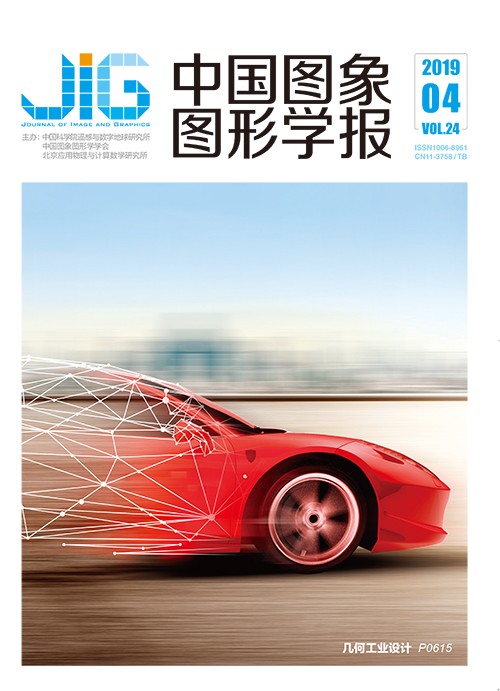
深度卷积网络卫星图像水泥厂目标检测
摘 要
目的 水泥厂作为重要的污染源企业需要对其进行统计和监管,近几年随着卫星遥感技术的发展和遥感影像分辨率的提高,使得基于卫星影像进行水泥厂目标检测成为可能。但是由于遥感图像中建筑目标的环境复杂多变,同时各个水泥厂在生产规模、设备构成、厂区结构、坐落方位上存在较大差异,图像表观上的形态各异和复杂环境干扰使得传统图像识别方法难以设计和提取有效特征。鉴于深度学习在视觉目标检测领域的成功应用,本文将研究应用深度卷积神经网络方法,实现在卫星图像上识别与定位水泥厂目标,为环保部门提供一种高效便捷的水泥厂目标检测和统计方法。方法 基于面向目标检测与定位的Faster R-CNN深度学习框架,以准确检测与定位水泥厂区域为目的,以京津冀地区的水泥厂位置作为训练和测试数据集,选用3种结构不同的提取特征卷积神经网络模型进行了对比实验。并针对小样本训练容易出现的过拟合和误检问题,采用图像去雾预处理、数据扩充、引入负样本等技术进一步提升模型能力。结果 测试集实验结果表明ResNet特征提取网络效果最好,准确率达到74%。为了进一步提高检出率并降低误检率,引入3种模型能力提升方法,在扩充检测数据集中的检出率达到94%,误检率降低到14%;在全球水泥厂数据集中的图像检出率达到96%,万幅随机图像的误检数量为30幅(0.3%)。对上海地区的卫星图像进行扫描检测,结果检测出11个已登记的水泥厂(共登记16个),另外还检测出17个未登记的水泥厂。结论 对于卫星地图上水泥厂这种具有特殊建筑构造但也存在厂区几何形状各异、所处地理环境复杂、随季节性变化等特点,本文提出的基于深度卷积网络的卫星图像水泥厂检测方法,能够自动学习提取有效的图像特征并对目标进行准确检测。针对小样本训练问题,引入3种方法显著提高了模型的检测精度。在模型泛化能力测试中,经过优化后的模型在水泥厂建筑目标检测任务中表现良好,具有重要的应用价值。
关键词
Cement plant detection on satellite images using deep convolution network
Xu Gang1, Yue Jiguang1, Dong Yanchao1, Lou Qijia2, Xiong Wencheng2, Nie Yihuang2(1.College of Electronic and Information Engineering, Tongji University, Shanghai 201804, China;2.Satellite Environment Center, Ministry of Environmental Protection, Beijing 100094, China) Abstract
Objective The problem of environmental pollution in China has become increasingly serious with the rapid development of society and economy. Creating a beautiful ecological environment is becoming an important issue in the current national planning. Environmental pollution problems affect the sustainable development of the country and society. As an important source of pollution, cement plants must be effectively counted and monitored. With the development of satellite remote sensing, high-resolution and good quality images become available. At the same time, deep learning has made great progress in the field of target detection, and many excellent deep convolutional network models, such as Faster R-CNN, YOLO, SSD, and Mask R-CNN, have been proposed recently. In the object detection task on satellite images, huge differences lie in the plant area scales, the structures of equipment composition, and the orientations of each cement plant. Thus, various cement plants are presented with various appearances due to the complex natural geographical surroundings. Overcoming the problem of cement plant target detection and recognition using traditional artificial image feature methods is difficult. However, deep learning has achieved excellent performance in the field of image target recognition. The application of the deep convolutional network may be a brilliant method to locate cement plants on satellite images. Method A method of detecting and locating cement plant position using high-resolution satellite images was proposed based on the convolutional neural network of Faster R-CNN framework for image target detection. First, we used GoogleMap API to download Google Earth satellite images. We developed this high-resolution satellite image dataset of cement factory target using GoogleMap web API, which contains 464 cement plant locations, according to the Beijing-Tianjin-Hebei cement dataset given by the Satellite Environment Center, Ministry of Environmental protection. Through the training and testing datasets of the cement plant in Beijing-Tianjin-Hebei with three different feature extracting modules (namely, VGG(visual geometry group network), ZF, and ResNet), we compared the testing results among the three CNN models. Three methods, which include image haze removal using dark channel prior, data augmentation, and adding negative training samples, were introduced to solve the problems of overfitting and reduce high false positive rate because of insufficient amount of training data. We also verified the influence of different numbers of negative training samples on model training. We used these features to assist cement plant target detection, considering the characteristics of cement buildings with evident cylindrical cement tanks and heating reaction tower buildings. Result The visualized images of the convolutional feature map show that the identification of the deep convolution network for cement plant target detection is mainly based on special buildings in the plant area, such as cylindrical cement tanks, heating towers, and rectangular plants. The experimental results on the test set reveal that the ResNet achieves the best performance with the average accuracy rate of 74%. An optimization method by three methods is proposed to further enhance the detection of accurate rate and suppress the false positive rate. The precision of the promoted CNN model reached 94% in the augmented testing dataset, and the false positive rate was reduced to 14%. The true positive detection rate in the global cement plant dataset reached 96%, and the number of false detection of 10 000 random satellite images was reduced to 30 (0.3%). The actual cement plant target scan detection of the satellite images in the entire Shanghai area was conducted. To avoid dividing the cement plant into two image parts, we used the overlapping detection method, which also detected adjacent areas between satellite images. As a result, 11 out of 16 registered cement plants, and 17 unregistered cement plants are detected. Conclusion The cement plant has special buildings of different shapes and background, even varying over time, thereby resulting in relatively difficult detection task. However, the method of cement plant detection on satellite images based on deep convolutional networks can automatically learn to extract effective features and can identify the position of the target in the image. In addition, some optimization methods, including image preprocessing, data augmentation, and adding negative samples to promote the performance of the model, are adopted to improve the model detection accuracy and solve the problem of few training data. The geographic latitude and longitude coordinates of cement targets are easy to obtain based on the result of the image object detection and its position information because the satellite image is geocoded. We can also estimate the cement plant area using information of detected boxes. In the model generalization capability test experiment, the proposed method achieves good performance in the detection and location tasks in the global cement dataset. The scanning results of the entire satellite image set in Shanghai indicate that the deep convolution network target detection method not only can detect most registered cement plants but also multiple unregistered cement plants. The method provides a reliable reference for monitoring environmental pollution sources. Furthermore, this model can be easily converted to detect other architectural targets using transfer learning techniques.
Keywords
high-resolution satellite image target detection convolutional neural network deep learning model optimization
|



 中国图象图形学报 │ 京ICP备05080539号-4 │ 本系统由
中国图象图形学报 │ 京ICP备05080539号-4 │ 本系统由